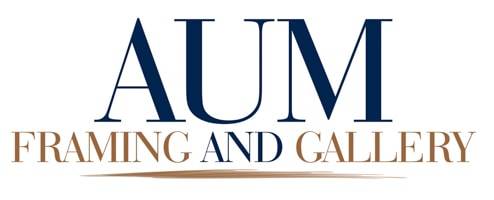A frame should always enhance the beauty of the artwork within. If a frame is garish or otherwise inappropriate, it’ll distract the eye from the art itself. If artwork is incorrectly framed, severe damage can occur. This quick summary will talk about how improper framing can lead to damage to artwork. If you know what to avoid, you can keep your art safe for years to come.
The Effects of UV Lighting
We come into contact with UV lighting more than we realize. It isn’t just direct sunlight that can cause fading through UV; even indoor lighting gives off UV. UV light causes most artwork to fade—some media and colors more rapidly than others. Typically, a painting on canvas or board is varnished, protecting the medium below, but other types of art on paper, memorabilia, documents, textiles, etc. should be housed behind UV glazing. We will always recommend Conservation Clear glazing (99 percent UV protection) at a minimum. If you have framed art that’s over twenty years old, it probably isn’t protected by a UV glazing, as the technology is relatively new.
Too Close for Comfort
Artwork should never touch the glazing (glass or acrylic) because it contains moisture, and that moisture can cause the art to stick to the glazing. A mat, in addition to being part of the design, also creates a space between the art and the glazing. An alternative to a mat is an acrylic spacer, which creates space between the art and the glazing. A wood frame, because of the acidity of the wood, can also damage art. For an expensive canvas, a frame-sealing tape acts as a barrier between the canvas and the wood. For other types of art, the art package (glazing, spacer or mat, the art, and backing) should be taped to create a sealed environment. The tape used to seal the package acts as a barrier not only to the wood frame but also to other contaminants in the air. That’s why it’s so important to consult professional framers whenever you want to frame a piece of artwork that you want to preserve for many years. Our team at AUM Framing and Gallery in our Denver frame store has the expertise needed to ensure that everything is done correctly to conserve the art.
The Importance of Mats
Every piece of artwork that’s glazed should have a mat between it and the frame or, as mentioned above, a spacer. Mats used in conservation framing should have a neutral PH and be lignin-free. Typically, that means using 100 percent cotton rag mats or alpha-cellulose mats. Older mats (and even cheaper mats still made today) were made from wood pulp and were therefore acidic.
Any Mounting of Art Should Be Reversible
Mounting should be reversible so that the artwork can be removed from the backing with no damage. Typically, that means hinging with Kozo hinges. Kozo hinges are made from rice paper, and a special wheat paste acts as the adhesive. This type of mounting is 100 percent conservational, and it’s the only way we recommend mounting valuable artwork. In special circumstances, framers can perform heat reversible dry mounting. During this process, a special tissue is placed between the artwork and the backing. The special adhesive in the tissue is heat activated. Once mounted, the art can be removed from the backing in the future by the application of heat. This isn’t 100 percent conservational but is reversible.
Backing Boards Are Important
Just as UV glazing is important above the artwork, the backing board is equally important. We generally use Artcare Foamcore. These boards contain millions of microscopic minerals called “zeolites,” and these help filter out air contaminants.
Keep Things Clean
It’s so important to keep artwork clean at all costs, even while it’s in a frame. Frames should be backed with materials like coroplast (for canvases) or paper dust covers. This keeps dirt, insects, and some moisture out of the framing package. If you don’t put the proper backing in a framing package, unwanted elements will make their way inside. Eventually, your artwork could be affected.
Ask your framer if their framing is 100 percent conservational and then ask them questions about the various issues above. If their answers don’t give you complete confidence in them, take your work to a framer who does true conservation framing.

